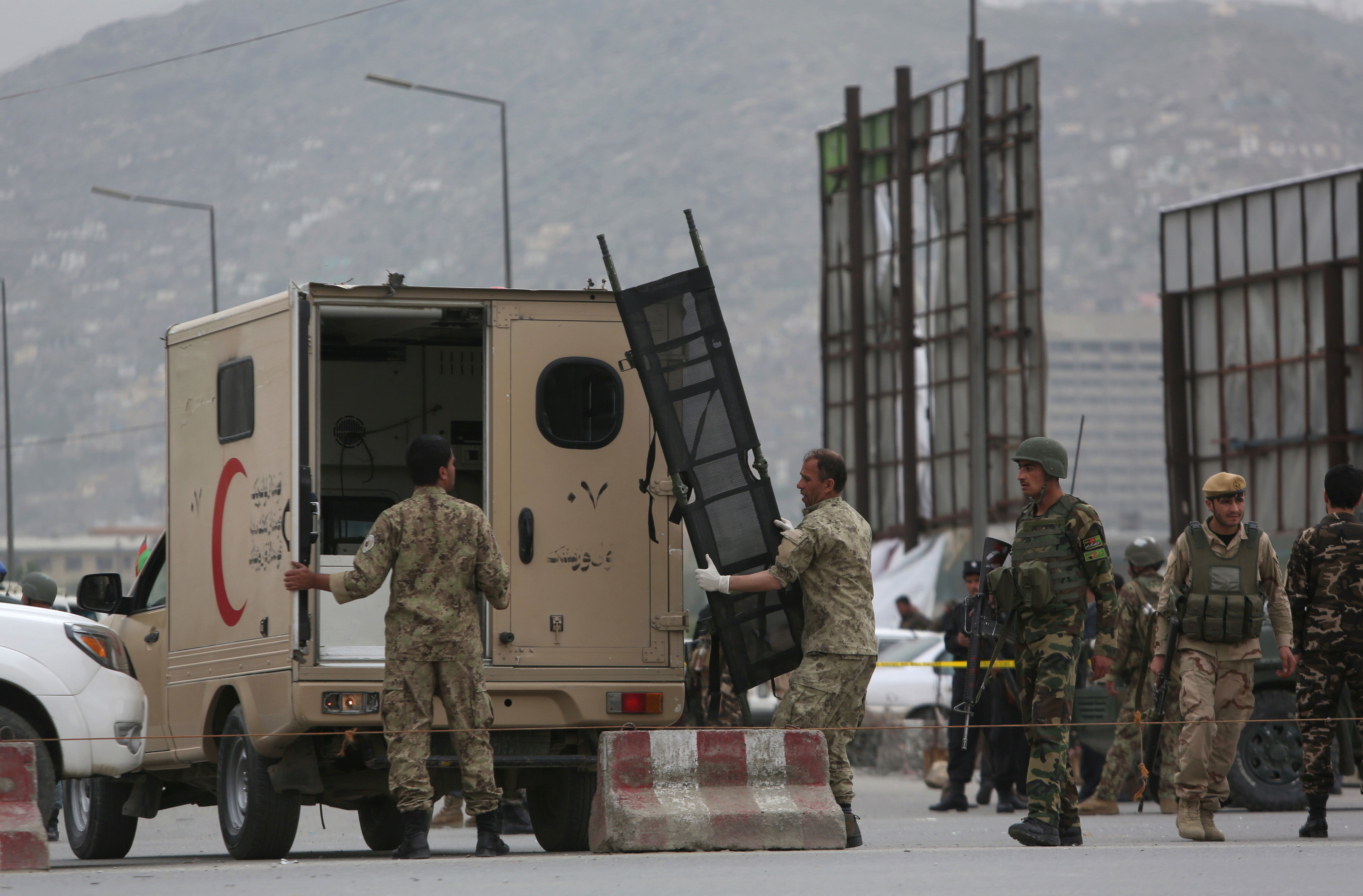Armed militants in Afghanistan have staged a co-ordinated assault on a key government security agency in the capital Kabul, killing at least 28 people and wounding more than 320.
The attack, including a suicide car bombing, appears to have targeted an agency providing personal protection for high-ranking government officials. The Taliban claimed responsibility.
The assault began when a suicide car bomber struck near the agency compound’s gates, said Kabul police chief General Abdul Rahman Rahimi.
After the explosion, armed gunmen stormed the compound and waged a prolonged battle with government security forces.
Public health ministry spokesman Ismail Kawasi said 327 wounded, including women and children, have been brought to area hospitals.
An interior ministry statement said that dozens of civilians were killed and wounded in the attack.
“This was one of the most powerful explosions I have ever heard in my life,” said Obaidullah Tarakhail, a police commander who was present when the attack began.
Mr Tarakhail said he could not see or hear anything for 20 minutes after the initial explosion.
“All around was dark and covered with thick smoke and dust,” he said.
Dozens of civilian apartment buildings, houses, shops and several government buildings were damaged by the car bomb blast.
Taliban spokesman Zabihullah Mujahid claimed responsibility for the attack.
Taliban insurgents have stepped up their attacks recently since announcing the start of their spring offensive last week.
President Ashraf Ghani issued a statement condemning the attack, and said it “clearly shows the enemy’s defeat in face-to-face battle with Afghan security forces”.
The attack in Kabul comes four days after another attack by Taliban insurgents in northern Kunduz province which was repelled by Afghan security forces.
Officials in Kunduz said that security has improved in the city and that the Taliban were defeated in other parts of the province, but operations were still under way to clear militant fighters from the rest of the province.
The Taliban held Kunduz for three days last year before being driven out by a two-week counter-offensive aided by US air strikes. It was its biggest foray into an urban area since 2001.

